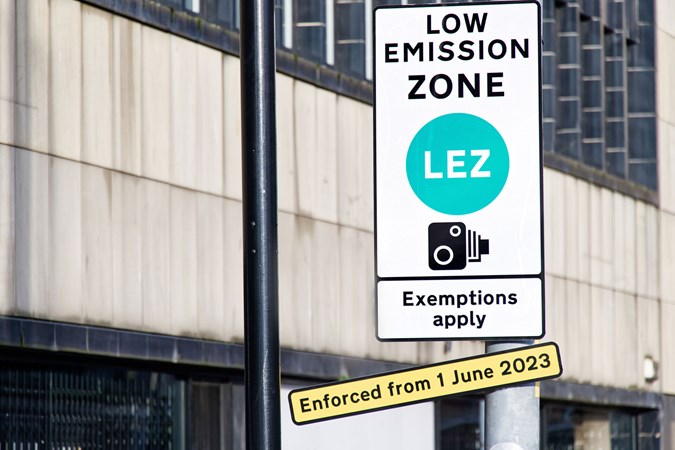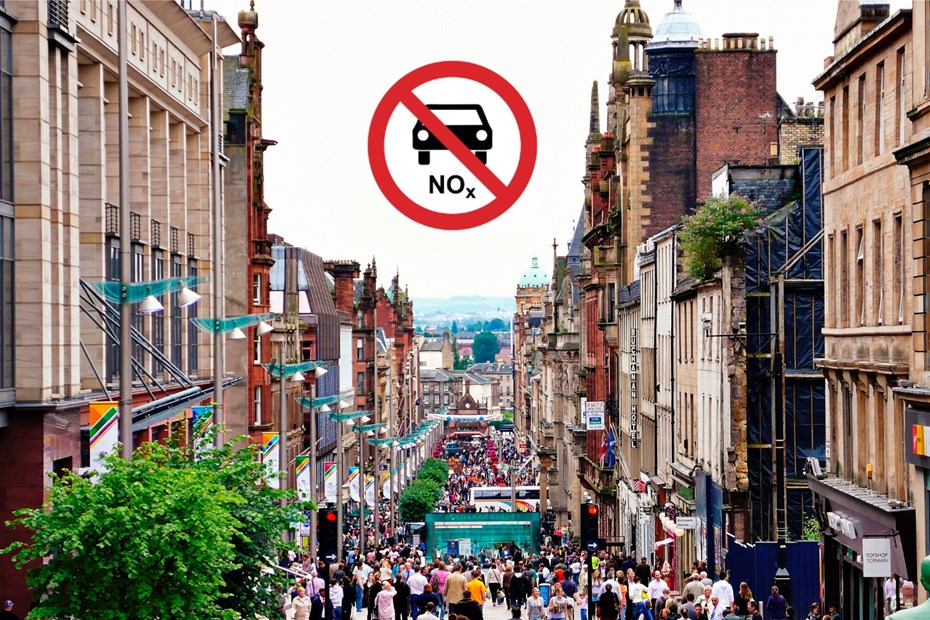Low-Emission Zones (LEZ) for passenger vehicles have been operational in London and Birmingham for some time. In 2022, four Scottish cities — Glasgow, Edinburgh Dundee, and Aberdeen — also introduced LEZs. As of now, all four Scottish cities are enforcing these zones with charges.
ULEZ stands for ultra-low emissions zone – where the restrictions on vehicles that can access that zone are even more stringent than in LEZ. The new LEZ in Scotland operate 24 hours a day, seven days a week. Aberdeen, Dundee, Edinburgh and Glasgow now have central areas marked out for low-emissions vehicles only.
In this brief guide, we detail all you need to know about the low-emission zones affecting Aberdeen, Dundee, Edinburgh and Glasgow.
Latest news…
Since Glasgow started enforcing LEZs on the 1st June 2023, its city council has made over a million in fines from its low-emission zones in the first 10 months of the scheme.
According to figures shared with STV News the local authority received £1,010,585 from the Penalty Charge Notice (PCN) payments up to April 13 2024.
However, the council are insisting any revenue raised from the scheme will be re-invested into net-zero and clean-air projects in the city.
A spokesperson for Glasgow City Council told STV News: “Revenue can only be used to support the operation of the LEZ, and projects and activities that either enhance the city’s air quality or help it achieve its net zero targets.”
According to the council, they have allocated £250,000 for “urban greening” projects and an additional £250,000 for “local community climate action projects” thus far.
Since Glasgow’s LEZ launch in June 2023, nearly 33,000 fines have been issued to non-compliant drivers who entered the restricted city centre zone.
With three other Scottish cities now enforcing LEZs, motorists should be aware of the specific zones within each city.
What is a low-emission zone?
Low-emission zones (LEZs) are pre-defined urban areas subject to special vehicular restrictions. In this case, low-emission vehicles are only permitted in these zones. Non-compliant vehicles, wishing to enter, are charged a daily rate. The restriction forces motorists to reconsider the vehicles they drive, if they wish to regularly access the LEZ.
How do they work?
To enter, vehicles not meeting the defined criteria will be expected to pay a charge to offset their emissions. Using Automatic Number plate Recognition (ANPR) cameras, the zones are monitored and it’s your responsibility to go on the website to pay it.
Drivers who fail to pay the LEZ charge will be fined for bringing in a non-compliant vehicle. Fines start at £60, reduced to £30 if paid within 14 days, but could be as high as £960 for HGVs and buses.
What you need to know?
Aberdeen – what you need to know
In May 2022, Aberdeen city centre gained its LEZ. Enforcement started on the 1st June 2024 and blue badge holders are exempt.
Aberdeen’s Low Emission Zone stretches from the east end of Union Street to Skene Street in the north. It extends to the front of Bon Accord Shopping Centre and reaches West North Street in the east. The zone includes the north and west sides of Aberdeen train station, ending at Willowbank Road in the south. The entire length of Union Street falls within the zone.
Dundee – what you need to know
Dundee introduced its Low Emission Zone (LEZ) at the end of May 2022. Following a two-year grace period, the council began officially enforcing the zone on May 30, 2024.
The Dundee Low Emission Zone covers the area within the A991 Inner Ring Road, excluding the Bell Street, West Marketgait, and Wellgate Shopping Centre car parks.
This zone includes landmarks such as the McManus Galleries, Abertay University, and the Overgate Centre. Notably, the ring road itself is outside the LEZ, allowing unrestricted access to the Tay Road Bridge for all vehicles.
Edinburgh – what you need to know
Like Aberdeen, Edinburgh introduced its area for low-emission vehicles only in May 2022. It too will offer drivers a two-year period of grace, enabling motorists to switch to cleaner vehicles if they wish to use the city centre without charge.
Edinburgh’s low-emission zone encompasses the entirety of Princes Street and extends to key landmarks including Edinburgh Waverley Station, Edinburgh Castle, and the St James Quarter. The northern boundary reaches Queen Street, while the eastern edge extends just beyond the Scottish Parliament and Holyrood House. This zone covers the entire Old Town and stops at the A700 to the south. The west boundary of the LEZ travels along the A700, B700 and Morrison Street.
Glasgow – what you need to know
Since 2018, the Glasgow City Council has operated an LEZ for buses in the city centre. Extending the LEZ to all vehicles became the second phase of this plan, which is now in effect. Charges have applied since June 2023.

The LEZ forms part of an action plan drawn up by the Glasgow City Council to reduce air pollution over the next five years. The plan includes emissions-based parking permits and a city-wide 20mph speed limit – set to come into force this year – to help curtail pollutants in the city.
Glasgow’s low-emission zone is surrounded by the M8 along its west and northern boundary, and the river Clyde on the south boundary. The zones east boundary runs past Saltmarket and along High Street.
Will the charges apply to residents in the zones?
Yes. As a mechanism to encourage all drivers to opt for low-emission vehicles, residents are also be required to pay on a daily basis, if they wish to keep their non-compliant vehicle in the zone.
Why are LEZs being introduced?
The low-emission zones (LEZs) are being introduced to combat poor air quality in the most congested parts of the cities. The focus is less on the carbon dioxide (CO2) emissions – much discussed in the conversation around climate change – and more on nitrogen oxide (NO2) emissions and particulate matter, which have been proven to exacerbate, and some cases cause, allergic responses and respiratory conditions, such as asthma.
Who can enter the Scottish LEZs?
Vehicles eligible to travel inside the LEZ without charge are Euro 6 for diesel cars and vans (post-September 2015) and Euro 4 for petrol cars and vans (post-September 2006). Electric vehicles (EVs) and plug-in hybrid electric vehicles (PHEVs) are also permitted to travel into LEZs.
There are no exemptions for foreign vehicles, so drivers from other countries will be expected to pay the LEZ charge.
Are there any exemptions?
Yes. Exemptions apply to historic cars that are older than 30 years and are no longer produced.
Blue badge holders, emergency services vehicles (including but not limited to) police, fire, ambulance, coast guard and Scottish Fire and Rescue. Military vehicles don’t pay, either.
Mopeds and motorbikes travel inside the zones without payment too.
Just so you know, we may receive a commission or other compensation from the links on this website - read why you should trust us.






